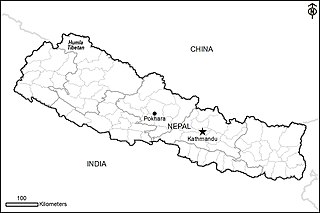Related Research Articles
Ethnologue: Languages of the World is an annual reference publication in print and online that provides statistics and other information on the living languages of the world. It is the world's most comprehensive catalogue of languages. It was first issued in 1951, and is now published by SIL International, an American evangelical Christian non-profit organization.

Surigaonon is an Austronesian language spoken by Surigaonon people. As a regional Philippine language, it is spoken in the province of Surigao del Norte, Dinagat Islands, Surigao del Sur, and some portions of Agusan del Norte, especially the towns near Lake Mainit, Agusan del Sur and Davao Oriental. The language, along with Butuanon and Tausug, are the only Visayan languages geographically native to Mindanao.
Jawi or Djawi or Djaui, is a nearly extinct dialect of the Bardi language of Western Australia, the traditional language of the Jawi people. There are no longer any known fluent speakers, but there may be some partial speakers.
This page is a list of lists of languages.
North Levantine Arabic was defined in the ISO 639-3 international standard for language codes as a distinct Arabic variety, under the apc code. It was also known as Syro-Lebanese Arabic, though that term was also used to refer to all Levantine Arabic varieties.
South Levantine Arabic was defined in the ISO 639-3 international standard for language codes as a distinct Arabic variety, under the ajp code. It was reported by Ethnologue as being spoken in the Southern Levant: Palestinian Territories, Israel, and most of Jordan.
Mugom language, also known as Mugom-ket, is the Sino-Tibetan language of the Mugali people of Mugu district in Nepal.
Waiwai is a Cariban language of northern Brazil, with a couple hundred speakers across the border in southern Guyana and Suriname.
Salumá is a Carib language of Brazil. It is considered to be suprious by Glottolog, suggesting Tiriyó or Waiwai instead.
Rawat (Raute), or "Jangali" (Jungle), is a small Sino-Tibetan language of India. It is spoken in 9 villages north of Askot in Pithoragarh district, Uttarakhand, India (Ethnologue) as well as in several villages in Dadeldhura District, Nepal and Darchula District, Nepal.
Senara (Niangolo), one of a cluster of languages called Senari, is a Senufo language of Burkina Faso and Mali.
Budza or Buja is a Bantu language of the Democratic Republic of Congo.
Ngbinda is a poorly documented Congolese Bantu language of uncertain affiliation. Prior to 1975 it had also been spoken in southern Sudan.
Yalahatan is an Austronesian language spoken on Seram Island (Indonesia) in Yalahatan and Haruru villages, and hamlet of Awaiya in Tananahu village.

South Barisan Malay, also called Central Malay or Middle Malay, is a collection of closely related Malayic isolects spoken in the southwestern part of Sumatra. None of them has more than one million speakers.
Parsi has been used as a name for several languages of South Asia and Iran, some of them spurious:
Spurious languages are languages that have been reported as existing in reputable works, while other research has reported that the language in question did not exist. Some spurious languages have been proven to not exist. Others have very little evidence supporting their existence, and have been dismissed in later scholarship. Others still are of uncertain existence due to limited research.
Semandang, or Onya Darat, is a Dayak language of Borneo.
Glottolog is an open-access online bibliographic database of the world's languages. In addition to listing linguistic materials describing individual languages, the database also contains the most up-to-date language affiliations based on the work of expert linguists.

Humla Tibetan, also known as Humla Bhotiya, and Humli Tamang, is the Sino-Tibetan language of the Tibetan people of Humla district in Nepal.
References
- ↑ Karahawyana at Ethnologue (18th ed., 2015) (subscription required)
- ↑ "Glottolog 5.1 - Karahawyana". glottolog.org. Retrieved 2025-01-22.
- ↑ Editor Ethnologue (2015-06-04). ISO 639-3 Registration Authority Request for Change to ISO 639-3 Language Code (PDF).
{{cite book}}:|last=has generic name (help) - ↑ Hammarström, Harald (September 2015). "Ethnologue 16/17/18th editions: A comprehensive review: Online appendices". Language. 91 (3): s1 –s188. doi:10.1353/lan.2015.0049. ISSN 1535-0665.